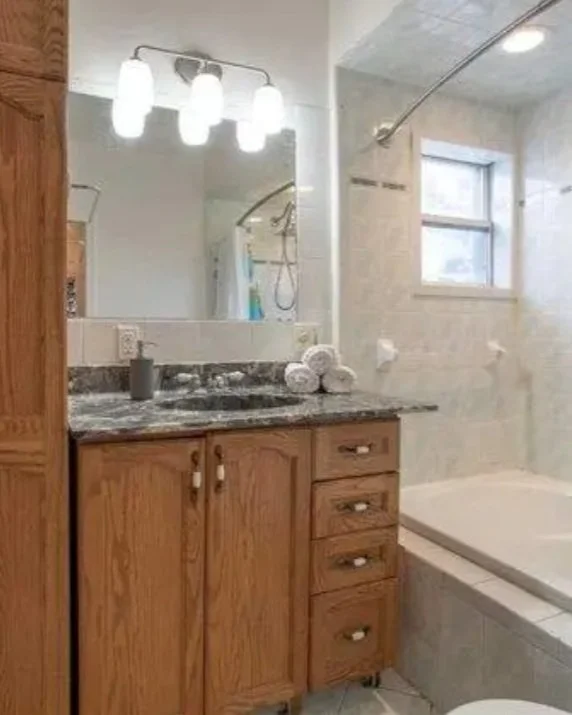Green Building
There is no shortage of talk about sustainability, environmental building and energy efficiency these days. Here’s what it means to me and my work.
Can a room be refreshed instead of a full gut? Take the 1980’s bathroom below for example (first picture is the after, second is before). This space was refreshed instead of incurring the high cost and inconvenience of a down-to-the-studs renovation. The tile floor and vanity were painted and sealed with several coats of a water proof finish. Some of the outdated electrical was removed and the light fixture was replaced. The toilet and faucet were replaced. The mirror was replaced and the walls got a new coat of paint with a snazzy colour. My work on this project saved hundreds of pounds of material from a landfill. It also cost a fraction of what a full reno would and took less than a week to complete versus several weeks or longer.
Air sealing. Extra insulation and fancy windows are great, but they won’t make any difference if your house leaks air. I was recently replacing damaged baseboards in a client’s master bedroom. After removing the old baseboards, I discovered gaps under the walls allowing cold air to blow into the room. A quick trip to the hardware store for a can of spray foam allowed me to seal up the gaps. This air sealing allows the insulation in the walls do its work, keeping the room warm in the winter and cooler in the summer.
Sustainable products. Despite our best intentions, almost all construction work will eventually end up in a landfill. I prioritize the use of building products with minimal environmental impact in all of my renovation projects. For example, using wood flooring instead of a plastic product whenever budgets allow. And always using mineral wool insulation with a modern vapour barrier instead of spray foaming an entire room.

